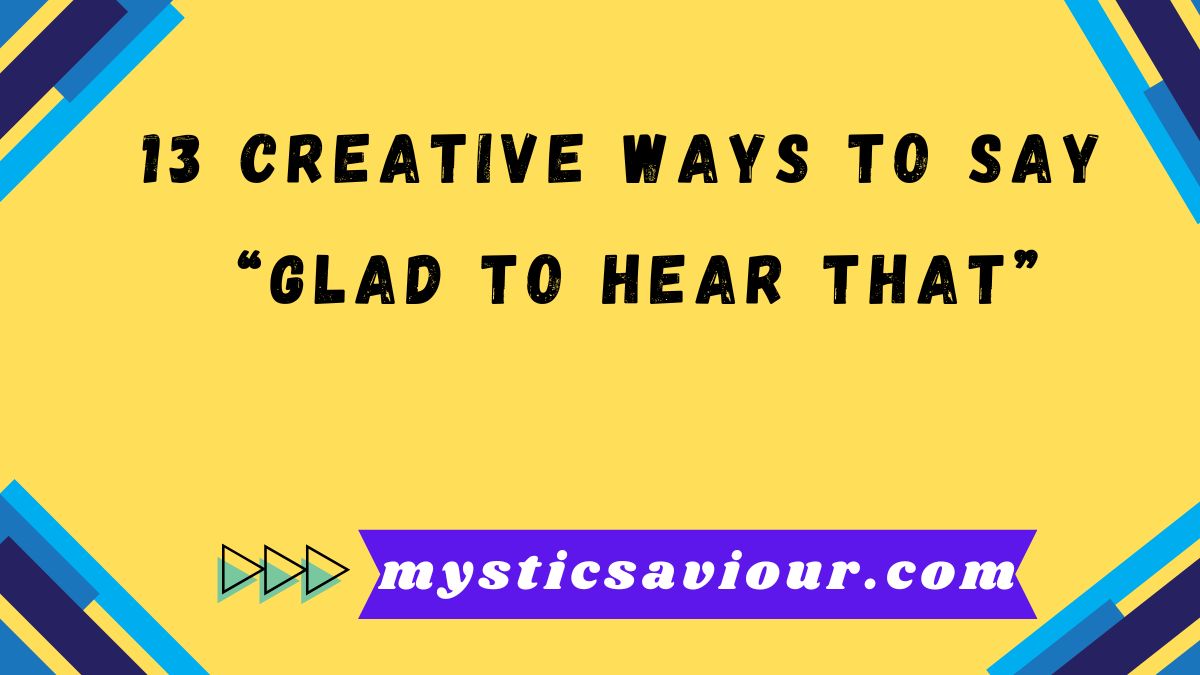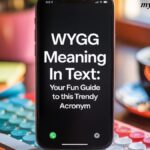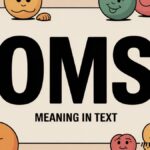“13 Creative Ways to Say ‘Glad to Hear That'” refers to a variety of alternative phrases used to express enthusiasm, joy, or excitement when hearing good news. This shift from the common expression not only adds variety to your responses but also enhances emotional connection in conversations, making your reactions feel more genuine and engaging.
Imagine having a conversation where every response feels uniquely tailored to the person’s excitement, rather than just defaulting to the same old phrase. By learning creative ways to say “Glad to hear that,” you can inject energy and warmth into your exchanges, leaving a lasting impression on everyone you interact with. These alternatives go beyond the basics to convey deeper enthusiasm and positivity.
In this article, we’ll explore 13 alternative phrases that can elevate your communication, whether you’re celebrating someone’s personal achievement or simply sharing in their happiness. These responses not only sound more natural but also help build stronger, more supportive relationships in both personal and professional settings. Get ready to enrich your conversations with these fresh, exciting expressions!
Why Change Your Responses?
Emotional connections play a crucial role in communication. When you offer an enthusiastic or thoughtful response, you signal support and positive reinforcement, which enhances relationships. By varying your word choice, you also add a layer of sentiment analysis, meaning your responses will align more closely with the tone and emotion of the conversation.
Using varied expressions like “That’s fantastic news” or “I’m overjoyed to hear that” is not just about being different. It’s about choosing words that best reflect the sentiment, the contextual meaning, and the depth of your reaction. This can be particularly valuable in both personal achievements and professional relationships.
Let’s explore 13 creative ways to say “Glad to hear that”, complete with examples and tips on when to use them.
1. That’s Fantastic News!

This phrase is perfect for when you’re reacting to exciting or impressive updates. It’s enthusiastic and conveys an immediate sense of excitement.
- Example: “You finally completed the marathon? That’s fantastic news!”
- Why it works: The word “fantastic” is loaded with enthusiasm, making the other person feel like their accomplishment is truly impressive.
When to use:
- Celebrating big personal victories
- Expressing excitement over professional achievements
- Reacting to milestones
2. I’m So Happy for You!
This phrase is warm, personal, and shows genuine care. It’s ideal for responding to life changes or achievements where the person’s emotions are at the forefront.
- Example: “You got into your dream school? I’m so happy for you!”
- Why it works: This response centers the other person’s happiness, offering emotional connection that strengthens the bond.
When to use:
- Major life events (e.g., graduation, engagement)
- Celebrating personal milestones
- Sharing joy in close relationships
3. What a Wonderful Update!
A versatile phrase that works in both formal and informal settings, this response is ideal for when you want to express delight without overwhelming the person.
- Example: “Your team won the championship? What a wonderful update!”
- Why it works: It’s positive but not overly effusive, making it perfect for professional environments.
When to use:
- Professional updates
- Casual conversations where excitement is appropriate but not too exuberant
- In formal communication
4. That’s Amazing to Hear!
For truly unexpected or incredible news, this phrase captures genuine admiration and astonishment.
- Example: “You’re traveling the world for a year? That’s amazing to hear!”
- Why it works: It communicates awe, indicating that the news has made a significant impression on you.
When to use:
- Surprising or extraordinary news
- When you want to emphasize how impressive the update is
5. I’m Thrilled for You!

If you want to show a deep level of excitement and enthusiasm, “I’m thrilled for you” is the way to go. It’s perfect for moments when the person has achieved something that deserves celebration.
- Example: “You passed your exams with flying colors? I’m thrilled for you!”
- Why it works: The word “thrilled” expresses a heightened level of excitement and is often used in personal, celebratory contexts.
When to use:
- When someone has achieved a significant success
- Celebrating personal milestones or accomplishments
- Informal or semi-formal settings
6. What Great News!
This is a classic response that works in almost any context. It’s versatile, friendly, and doesn’t feel forced.
- Example: “Your book got published? What great news!”
- Why it works: Simple, direct, and shows genuine positivity without excessive enthusiasm.
When to use:
- Everyday conversations
- Sharing in someone’s good news, whether it’s personal or professional
7. Absolutely Delightful!
For news that’s charming, endearing, or brings a smile to your face, this response conveys an appreciation for something that makes you feel happy.
- Example: “Your puppy is so cute! Absolutely delightful!”
- Why it works: The word “delightful” communicates joy in a more refined way, offering a gentle yet genuine response.
When to use:
- Complimenting someone’s achievement that’s joyful but not monumental
- Showing appreciation for personal, non-professional accomplishments
8. That’s Just Awesome!
If you’re looking for an informal, high-energy response, “That’s just awesome!” hits the mark. It’s perfect for close friends, family, or younger audiences.
- Example: “You’re going skydiving next week? That’s just awesome!”
- Why it works: Casual, exciting, and full of energy—this response makes the conversation feel lively.
When to use:
- For friends or family
- In response to thrilling news or adventures
9. I’m Really Excited for You!
This phrase can help you convey genuine enthusiasm. It works well for someone embarking on a new journey or achieving something that requires a lot of effort.
- Example: “You’re launching your own startup? I’m really excited for you!”
- Why it works: It emphasizes your support for the person and shows you are invested in their future.
When to use:
- Professional endeavors or major life changes
- When someone is taking on a challenge or opportunity
10. Such Wonderful News!

A great middle-ground response for moments that are positive but don’t warrant an over-the-top reaction. It’s sweet and appreciative without being excessive.
- Example: “You’re getting a promotion? Such wonderful news!”
- Why it works: This shows appreciation while keeping the tone light and sincere.
When to use:
- Everyday positive news
- Casual to semi-formal conversations
11. I’m Overjoyed to Hear That!
If someone shares particularly good news, especially when it involves something deeply personal or emotionally significant, this response shows a deep emotional connection.
- Example: “You’ve recovered from surgery? I’m overjoyed to hear that!”
- Why it works: It communicates sincere joy and relief, making the other person feel supported.
When to use:
- News involving health, recovery, or other personal milestones
- Deeply emotional or heartwarming situations
12. That’s Incredible!
Use this when the news is so impressive or out-of-the-ordinary that you’re nearly speechless. It expresses strong admiration or astonishment.
- Example: “You met your idol? That’s incredible!”
- Why it works: The word “incredible” conveys a high level of admiration and awe, perfect for jaw-dropping news.
When to use:
- Amazing or extraordinary updates
- Moments where you’re genuinely stunned by the news
13. How Wonderful!

A simple but effective response that can be used in many different contexts, especially in formal or semi-formal settings. It conveys joy and appreciation in a calm and pleasant way.
- Example: “You’ve finished your first novel? How wonderful!”
- Why it works: It’s warm and appreciative, but still professional, making it versatile across various settings.
When to use:
- Professional settings
- When you want to sound refined without overdoing the enthusiasm
FAQs
1. Why should I use different ways to say “Glad to Hear That”?
Using different expressions makes your responses feel more genuine and engaging, helping to build stronger emotional connections.
2. Can these phrases be used in professional settings?
Yes, many of these alternatives are suitable for professional conversations, adding warmth without being overly informal.
3. Are these phrases suitable for all types of good news?
Most of the phrases are versatile and can be adapted to a wide range of positive updates, from personal to professional.
4. Can I use these phrases with people I don’t know well?
Yes, you can use these phrases in both formal and casual contexts to keep your responses polite yet enthusiastic.
5. Do these alternatives help improve my communication skills?
Yes, using varied phrases enhances your communication by making it more positive, supportive, and emotionally connected.
Conclusion
In conclusion, using 13 Creative Ways to Say “Glad to Hear That” can really change the tone of your conversations. By choosing more varied and heartfelt responses, you can make others feel truly valued and appreciated. These alternatives show more excitement and positivity, helping you connect on a deeper level.
Next time you hear good news, try one of these phrases instead of the usual. It will not only make your response stand out but also strengthen your relationships. Whether in casual chats or professional talks, these 13 Creative Ways to Say “Glad to Hear That” will help you bring joy and warmth to every conversation.

Sophie Bell is a creative writer at Mystic Saviour, specializing in Word Mechanics, Name Narratives, and Linguistic Twists. She brings a passion for language and storytelling, helping readers explore unique and engaging ways to enhance their writing.










